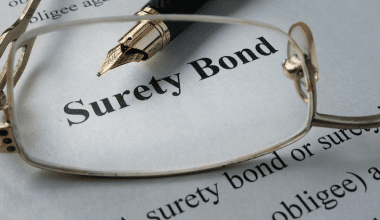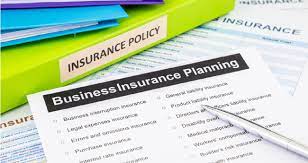Mortgage insurance, also known as private mortgage insurance (PMI), can assist homebuyers in obtaining an affordable, competitive interest rate and simply qualifying for a loan with as little as a 3% down payment. In exchange for these superior terms, the borrower must pay monthly insurance premiums for at least several years. Here we’ll learn more about PMI and the process of mortgage insurance removal.
What Is Mortgage Insurance?
Mortgage insurance is a policy that protects a mortgage lender in the event that a borrower fails to make payments. While mortgage insurance is intended to safeguard the lender, the lower risk allows lenders to provide loans to borrowers who would not normally qualify for a mortgage, let alone an inexpensive one.
Lenders have traditionally required a 20% down payment as a condition of qualifying for a mortgage because a borrower who invests their own money in their home is less likely to stop making payments and allow the bank to foreclose on the home if the value of their home drops or their personal finances deteriorates. Both of these scenarios occurred during the 2007 housing crisis and recession, emphasizing the significance of mortgage insurance.
It is worth noting that conventional loan borrowers with lower down payments must pay private mortgage insurance (PMI), whereas FHA loan applicants must pay a mortgage insurance premium (MIP).
How Does PMI Work?
Mortgage insurance costs you money, but it protects the lender. Mortgage insurance reimburses the lender for a portion of the principal if you fail to make mortgage payments. Meanwhile, you’re still obligated to repay the loan, and if you fall too far behind, you could lose your property in foreclosure.
This differs from mortgage life insurance, which pays off the remaining mortgage if the borrower dies, or mortgage disability insurance, which pays off the mortgage entirely if the borrower becomes handicapped.
Types of Mortgage Insurance
You should be aware of three main types of mortgage insurance. Here’s a basic rundown of each category.
#1. Buyer-Paid Mortgage Insurance
Your PMI will almost always be borrower-paid mortgage insurance (BPMI). This is the form of PMI that is generally mentioned by lenders. BPMI is mortgage insurance that is included in your monthly mortgage payment.
Let’s look at how it might affect your costs. PMI typically costs between.5 and 1% of the loan amount per year. This equates to $1,000–$2,000 in mortgage insurance each year, or around $83–$166 per month.
You can cancel the insurance after paying more than 20% of the home’s value. This happens when you achieve a 78 percent LTV ratio, which implies you’ve paid off 22 percent of the loan’s value, or when you reach the midpoint of your loan term, which is 15 years for a 30-year mortgage.
#2. Lender-paid Mortgage Insurance
Lender-paid mortgage insurance (LPMI) means that your lender pays your mortgage insurance upfront, but your mortgage rate is higher to compensate. For LPMI, the interest rate increase is typically 0.25–.5% higher. You’ll save money on monthly payments and have a cheaper down payment because LPMI does not demand a 20% down payment.
Your interest rate will be higher if your credit score is low. If you have a low credit score, LPMI will cost you extra. Furthermore, because LPMI is integrated into your payment schedule for the full loan term, you will never be able to cancel it.
#3. FHA Mortgage Insurance Premium
We’ve discussed the many types of mortgage insurance available for traditional loans, but what about government-backed mortgages? Most FHA home loans, which are federally backed loans for first-time home buyers, also require the purchase of mortgage insurance, commonly known as a mortgage insurance premium (MIP).
Unless you make a down payment of 10% or more, you will often be required to pay mortgage insurance for the rest of your loan term (in which case, MIP would be removed after 11 years). You’ll have to pay in two ways. First, there is an FHA loan upfront mortgage insurance payment (UFMIP), which is typically 1.75 percent of the loan amount.
You’ll also have to pay an annual mortgage insurance premium. Annual MIP payments range between 0.45 and 1.05 percent of the basic loan amount.
Borrower-paid mortgage insurance functions similarly, but there are a few important differences. You’ll pay a monthly sum, similar to BPMI, which is usually incorporated into your mortgage payment.
This is how it might work: You will make an initial payment of 1.75 percent of the loan amount. If you have a $200,000 mortgage, you should anticipate paying $3,500 at closing. Throughout the life of your mortgage, you should expect to pay an average of.85 percent of your loan amount for MIP. This percentage may be higher depending on how much money you put down on your loan.
When Is PMI Necessary?
When you take out a mortgage loan and your down payment is less than 20% of the purchase price, you may be forced to obtain mortgage insurance. The requirement for mortgage insurance varies depending on the lender and loan package. Depending on your circumstances, however, some lenders may allow you to avoid PMI even if you make a lower down payment. Consider asking your lender if PMI is necessary, and if so, if there are any exceptions that you may qualify for.
Is Mortgage Insurance Part of Your Mortgage?
Your mortgage loan does not contain mortgage insurance. It is separate insurance coverage from your mortgage. Mortgage insurance is typically paid for in two ways: in a lump sum upfront or over time with monthly payments. However, it is fairly uncommon for the monthly cost of your PMI premium to be rolled into your mortgage payment. You can make a single monthly payment to cover both your mortgage loan and your mortgage insurance this way.
Check the loan estimate you receive from a lender for information and ask questions if you want to know whether a lender requires mortgage insurance, how you pay for it, and how much it will cost. You can also conduct your own research by going to a website like the Consumer Financial Protection Bureau. To further understand what PMI may be required and whether you’d pay premiums monthly, upfront, or both, seek information that outlines the closing disclosures on your loan estimate.
The good news is that if you do require mortgage insurance, you may be able to remove it after making enough loan payments to achieve more than 20% equity in your house. Check with your lender to see when and how you can get out of PMI2 when it is no longer required.
Mortgage Insurance Removal
By the time your house has 20 percent equity, you can remove PMI from your monthly payment by seeking cancellation or refinancing the loan. The procedures you follow to cancel your PMI will differ based on the type of insurance you have.
Borrower-Paid Mortgage Insurance Removal
Step 1:
Put up 20% of your own money. You won’t be able to cancel your PMI unless you have at least 20% equity in your home. Continue to make monthly payments on your loan. To develop equity faster, direct whatever excess money you have coming in toward your principle. Don’t forget to include a message with your excess payments instructing your lender that the payment should be used for your principal debt rather than your next payment. There may be a space on your statement or a checkbox online for this.
Step 2:
Make contact with your lender. When you have 20% equity in your house, notify your lender to discontinue your PMI. Take whatever measures your lender requires to make this happen.
Step 3:
Ensure that your PMI is no longer present. Request confirmation from your lender that you are no longer required to pay PMI. Then, obtain a mortgage statement that includes your most recent payment information. Make sure your monthly payment is lower than it was when you had PMI on your loan. If your monthly payment remains the same, contact your lender for more information.
Private Mortgage Insurance And Lender-Paid Mortgage Insurance Removal
If you have LPMI or MIP and made less than a 10% down payment, you can only remove your payments through a refinance.
Step 1
Accumulate 20% equity in your home. Before you may refinance, you must have at least 20% equity in your house. If you refinance with less than 20% equity, you’ll have to pay PMI again.
Step 2
Shop around for loans. You are not required to refinance with your present lender; you may choose to engage with a new provider instead. Compare lenders in your area and select one to utilize for a refinance. Before you apply, make sure you meet their refinancing requirements.
Step 3
Submit an application for a refinance. Fill out an application, provide financial evidence, and answer to any lender inquiries as quickly as feasible. Make it a point to mention that you wish to refinance to a conventional loan.
Step 4
Await the completion of underwriting and appraisals. When you apply for a loan, your lender will begin the underwriting process. During this period, a financial professional examines your documents to ensure you are eligible for a refinance. In addition, your lender will assist you in scheduling an appraisal. Allow for the completion of the appraisal and underwriting processes.
Step 5
Recognize your Closing Disclosure. Your lender will give you the Closing Disclosure paperwork after underwriting and an appraisal. This document explains the conditions of your new loan as well as the closing charges you must pay. Remember to acknowledge receipt as soon as possible. Your lender will not be able to schedule your closing until you have reviewed your disclosure.
Step 6
Attend the closing. You will pay your closing costs and sign your new loan here. You then make payments to your new lender.
Does Mortgage Insurance Have to Be Purchased?
You’ll probably have to pay for PMI if you’re getting a traditional mortgage and your down payment is less than 20%. However, you can avoid mortgage insurance if you can put down at least 20% of the purchase price.
Mortgage insurance is a requirement for FHA loans.
Exactly How Is Mortgage Insurance Determined?
Your loan balance determines the amount of mortgage insurance. You must first determine your loan-to-value (LTV) ratio in order to estimate the amount of mortgage insurance you will pay. Divide your loan balance by the value of your property to get at this. The PMI percentage, which your lender can supply, is then multiplied by this.
What Is Covered by Mortgage Insurance?
Private mortgage insurance does not in any way protect your house; it is only insurance for the mortgage lender. Mortgage insurance acts as a safety net for the lender in the event that you default on the loan since lenders see mortgage loans with smaller down payments as riskier investments. Your lender gets to choose the provider of mortgage insurance because PMI only protects the lender.
Conclusion
Borrowers must pay for mortgage insurance, but it allows them to become homeowners sooner by lowering the risk to financial institutions of giving mortgages to persons with low down payments. If you want to own a home sooner rather than later for lifestyle or budgetary reasons, you may find it desirable to pay mortgage insurance charges. In addition, if you’re paying monthly PMI or split-premium mortgage insurance, premiums might be canceled if your home equity exceeds 80%.
However, if you are one of the borrowers who must pay FHA insurance premiums for the life of the loan, you should reconsider. You may be able to refinance out of an FHA loan later to avoid paying PMI. However, there is no certainty that your work position or market interest rates will allow or profit from a refinance.
Mortgage Insurance FAQs
What is the average cost of mortgage insurance?
According to mortgage insurance data from the Urban Institute, you can expect PMI to cost between 0.58 percent and 1.86 percent of the loan amount either paid monthly or in a flat sum upfront. In terms of cash, Freddie Mac forecasts that this will amount to $30 to $70 for every $100,000 added to a monthly mortgage payment.
Is it necessary to have mortgage insurance?
Mortgage insurance is usually required on FHA and USDA loans as well.
Is PMI a tax write off?
Yes, private mortgage insurance (PMI) premiums are deductible as part of the mortgage interest deduction until 2020.
How long do you pay FHA mortgage insurance?
Borrowers who put down less than 10% on an FHA loan are required to pay FHA mortgage insurance until the loan term is completed. However, if you put down at least 10%, you can have FHA MIP erased after 11 years of payments.
- Zillow Mortgage Calculator: How Accurate is Zillow Mortgage Calculator? (+ Quick Tips)
- Secondary Mortgage Market: Step By Step Guide On How It Works
- How to Calculate Home Equity with Practical Examples & All You Need
- Cash-out refinance loan explained (+ requirements and tools)
- Mortgage Calculator Refinance Guide: Overview, Comparisons, & All you need






